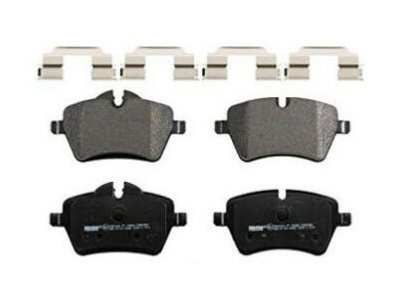Let's talk about brake discs first. Brake discs are generally divided into middle ventilated discs, perforated ventilated discs, and ceramic brake discs. As the name implies, the middle ventilating disc is hollow inside, and cold air can pass through the middle to cool down. It is generally used for the front wheel brake discs of civil vehicles. Perforated ventilating plate Perforated ventilating plate is to perforate the surface of the ventilating plate to ensure air circulation to the greatest extent and reduce heat attenuation. The perforated ventilating plate is one level higher than the ventilating plate. Ceramic brake discs are not ordinary ceramics, but reinforced composite ceramics composed of carbon fiber and silicon carbide at a high temperature of 1700 degrees. The weight of the ceramic disc is less than half of the ordinary cast iron disc. For example, the SLR MCIAREB with ceramic brakes has a front wheel brake disc with a diameter of 370mm but a weight of only 6.4 kg. The CL-CLASS, which uses ordinary brake discs, has a front disc diameter of 360mm but weighs up to 15.4 kg. Although the ceramic brake disc has excellent braking performance, its price is very expensive. For example, the optional price on high-performance sports cars of Porsche and Audi is more than 100,000 yuan.

Let's talk about the
brake pads again. Generally divided into asbestos type brake pads, semi-metal type brake pads, low metal type brake pads, ceramic type
brake pads, NAO (non-asbestos organic matter) type brake pads. The so-called asbestos-type brake pads are the earliest brake pads used at low cost and easy to manufacture. Early and common use. However, asbestos materials have been confirmed by the medical community to be carcinogens and their use is now banned. From the appearance of semi-metal brake pads, it has fine fibers and particles, which can be easily distinguished from asbestos type and NAO type. Compared with traditional brake materials, it mainly uses metal materials to increase the strength of the
brake pads.At the same time, temperature control and heat dissipation capabilities are also superior to traditional materials. However, because the material of the brake pad contains more metal components, especially in a low temperature environment, excessive braking pressure will cause the surface between the brake disc and the brake drum to wear and produce noise. From the appearance of low-metal brake pads, low-metal brake pads are somewhat similar to semi-metal
brake pads, with fine fibers and particles. The difference is that they have lower metal content than semi-metal brake pads. Ceramic brake pads The brake pads of this formula use new ceramic materials with low density, high temperature resistance and wear resistance. It has the advantages of no noise, no dust, no corrosion to the hub, long service life, and environmental protection, but the price is higher. As for the NAO (non-asbestos organic matter) brake pads, it should belong to the legendary artifact. It has the advantages of no dust pollution, low wear, low noise, and the service life is significantly extended.


